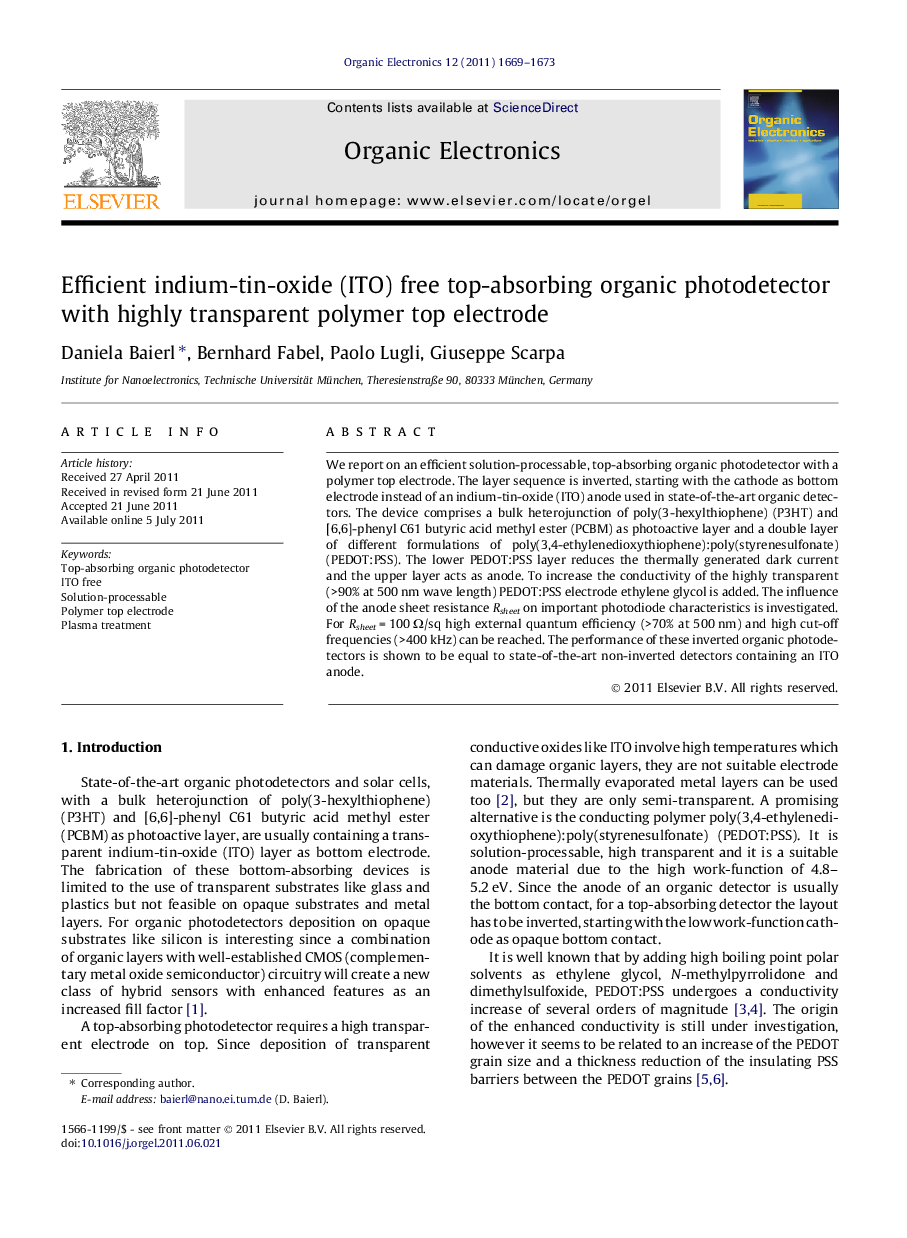| Article ID | Journal | Published Year | Pages | File Type |
|---|---|---|---|---|
| 1267609 | Organic Electronics | 2011 | 5 Pages |
We report on an efficient solution-processable, top-absorbing organic photodetector with a polymer top electrode. The layer sequence is inverted, starting with the cathode as bottom electrode instead of an indium-tin-oxide (ITO) anode used in state-of-the-art organic detectors. The device comprises a bulk heterojunction of poly(3-hexylthiophene) (P3HT) and [6,6]-phenyl C61 butyric acid methyl ester (PCBM) as photoactive layer and a double layer of different formulations of poly(3,4-ethylenedioxythiophene):poly(styrenesulfonate) (PEDOT:PSS). The lower PEDOT:PSS layer reduces the thermally generated dark current and the upper layer acts as anode. To increase the conductivity of the highly transparent (>90% at 500 nm wave length) PEDOT:PSS electrode ethylene glycol is added. The influence of the anode sheet resistance Rsheet on important photodiode characteristics is investigated. For Rsheet = 100 Ω/sq high external quantum efficiency (>70% at 500 nm) and high cut-off frequencies (>400 kHz) can be reached. The performance of these inverted organic photodetectors is shown to be equal to state-of-the-art non-inverted detectors containing an ITO anode.
Graphical abstractFigure optionsDownload full-size imageDownload as PowerPoint slideHighlights► We developed a top-absorbing organic photodetector with a polymer electrode. ► This photodetector is ITO (indium-tin-oxide) free. ► A high quantum efficiency of 70% is shown. ► The impact of anode sheet resistance on the device performance is investigated. ► The anode sheet resistance does not dominate the diode cut-off frequency.
